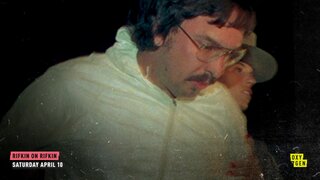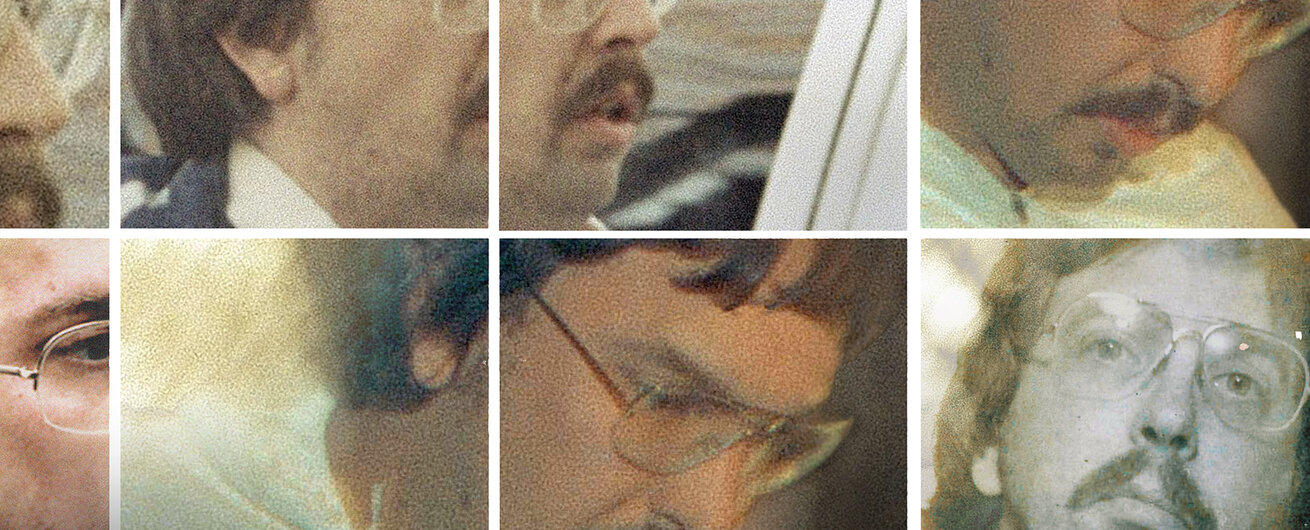Create a free profile to get unlimited access to exclusive videos, breaking news, sweepstakes, and more!
He's New York's Most Prolific Serial Killer — Who Were Joel Rifkin’s Victims?
“As much as I say I wanted to stop, there probably would’ve been others,” Joel Rifkin said of the likelihood he would have continued to kill if he hadn’t been caught in 1993.

Joel Rifkin was an unemployed New York landscaper living a dark double life as a prolific serial killer — claiming the lives of 17 women, a staggering total.
His reign of terror came to an end on June 28, 1993 after he was pulled over for a routine traffic stop by New York State Police, who discovered the decomposing body of 22-year-old Tiffany Bresciani in the back of his pickup truck.
“At first he was telling us like he didn’t know anything about the body in the back of the car and then he was basically saying that he knew she was there but he doesn’t know what happened,” former New York State Police Trooper Sean Ruane told CNN in 2018.
Rifkin initially claimed he had “blacked out,” but soon admitted that Bresciani had not been his only victim. Rifkin told authorities he had taken the lives of another 16 women, revealing “exactly where he placed the bodies and how he actually had killed them,” Ruane said.
Rifkin, who is the focus of Oxygen's upcoming special, "Rifkin on Rifkin: Private Confessions of a Serial Killer" airing Saturday, April 10 at 7/6c on Oxygen as part of Serial Killer Week, often targeted sex workers, who he was able to kill without calling much too much attention to their disappearances. He went to painstaking efforts to try to conceal the bodies, often dismembering the victims, placing their bodies in oil drums, or throwing them into bodies of water, he would later tell WCBS-TV in 2011.
“It’s like my own little nightmare scenarios,” he said.
When police later searched his mother’s home, they found a treasure trove of mementos that Rifkin had saved from his victims, including driver’s licenses, their underwear, jewelry, and other trophies, according to a 2018 Newsday article.
Prosecutor Fred Klein described Rifkin as a “killing machine” who acted in “deliberate, premediated and methodical” ways to carry out his gruesome murders, The New York Times reported in 1994. And Rifkin told WCBS-TV in 2011 that his victim count would have likely been much higher if he hadn’t been arrested in 1993.
“As much as I say I wanted to stop, there probably would’ve been others,” he admitted.
So who were the women who lost their lives to this disturbing killer? Here is a list of Rifkin’s victims:
Heidi Balch: Authorities believe Heidi Balch was Rifkin’s first victim — but it would take decades before she would ever be properly identified.
Rifkin initially told investigators that he'd driven to New York City in 1989 to pick up a prostitute named “Susie,” according to a 2013 The Associated Press article. While his mother was out of town, Rifkin and Balch returned to his childhood home, where they stayed for the night — but Rifkin soon took out his rage on Balch, bashing her in the head with a Howtizer artillery shell and strangling her to death, as recounted on "Rifkin on Rifkin."
Her severed head was found in March 1989 on a New Jersey golf course, but for almost 25 years investigators were unable to positively identify the remains because Balch had used various names and Social Security numbers. The break came in 2013 when investigators discovered that Balch, who had been reported missing by her aunt in 2001, had also used the name “Susan Spencer.” They were able to successfully match her to the remains, according to the AP.
Julie Blackbird: Rifkin killed again about 16 months later, after picking up Julie Blackbird in 1990 and bringing her back to his home. After the pair spent the night, once again at his mother’s home, Rifkin beat her with a table leg and strangled her to death, according to Biography.
He told investigators he dismembered her body, put it into various buckets filled with concrete, and dropped the buckets into the East River and Brooklyn canal. Her body was never recovered.
Barbara Jacobs: Jacobs was killed on July 14, 1991. The 31-year-old’s body was later found inside a plastic bag, stuffed into a cardboard box and thrown into the Hudson River.
Mary Ellen DeLuca: DeLuca, 22, lost her life on Sept. 1, 1991 after she allegedly complained about having sex with Rifkin after he had bought her cocaine, according to ThoughtCo.
Her body was discovered in Cornwall in October 1991, a month after she had been reported missing by her family, The New York Times said in 1993.
Yun Lee: Authorities believe Lee, 31, was strangled to death on September 23, 1991, Thought Co. reports. Her body was thrown into the East River.
Jane Doe #1: Rifkin killed an unidentified woman in December 1991 by strangling her to death during sex. He placed her body into a 55-gallon oil drum and dumped it into the East River.
Lorraine Orvieto: Orvieto, 28, disappeared in Dec. 1991. Her mother, Florence Orvieto, told The New York Times that she had been saving her Christmas presents for two years until she learned in 1993 that her daughter’s body had been discovered in a 55-gallon oil drum in Coney Island Creek in Brooklyn.
Mary Ann Holloman: Authorities believe that 39-year-old Holloman was killed on January 2, 1992. Her body was later found in an oil drum in Coney Island Creek, according to ThoughtCo.
Iris Sanchez: Sanchez, 25, was reportedly killed on Mother’s Day weekend in 1992. Rifkin told authorities he placed her body into a mattress and put it at an illegal dump site near the JFK Airport, according to ThoughtCo.
Anna Lopez: Lopez’s nude body was found May 25, 1992 in a wooded area off Interstate 84 in Putnam County, according to The New York Times. Her mother told the newspaper in 1993 that her daughter had been a happy and outspoken child, who later struggled with drug abuse and began to work as a prostitute. She vowed at the time to be present in the courtroom to let Rifkin and others know that the victims had been more than sex workers.
“I want to get all these families together and I want everybody to be there in court with me,” she said at the time. “I want to show these girls, these prostitutes, have families who care. They were probably alone on the streets, but not in the world.”
Jane Doe #2: A second unidentified woman was killed some time during 1991. Portions of her remains were later discovered inside an oil drum in New Creek in Brooklyn, according to ThoughtCo.
Violet O’Neill: O’Neill’s dismembered body parts were found over three days in July 1992 in multiple waterways including the Harlem River, East River, and a body of water near Governor’s Island, according to a New York Times article.
Her mother, Victoria O’Neill, told the newspaper she had last seen her daughter on July 16, 1992. The 21-year-old — who was also the mother of a young son — had been staying at the time with her grandmother in New York City when she disappeared.
“My daughter was a very beautiful girl,” Victoria O’Neill said. “The only thing that makes me feel a little better is to think that perhaps she didn’t die in pain.”
Mary Catherine Williams: Mary Catherine Williams, 31, was linked to Rifkin after some of her credit cards were found among Rifkin’s belongings, according to a Newsday article from 1993.
Her mother, Doris Williams, described her daughter to the news outlet as a struggling actress and former high school homecoming queen who had moved to New York City from her home in Charlotte, North Carolina.
"Last Christmas (1991) she came home and we begged and begged her not to go back to New York," she said. "She did not come home this Christmas, so we knew something was wrong."
Williams, a former cheerleader at the University of North Carolina in Chapel Hill, had struggled with an addiction to crack cocaine after her marriage broke up and often turned to prostitution to help support the habit, according to Newsday.
Jenny Soto: Jenny Soto's body later washed up along the rocks of the Harlem River in November of 1992. The 23-year-old was wearing only a T-shirt.
“She had pieces of skin under her fingernails,” her sister Margarita Gonzales told The Associated Press in 1993. “And she had fake nails and those were ripped off when she fought him.”
Her family described Soto as a quiet Brooklyn girl who loved to play with her nieces and nephews but said she had a wilder side when she went into the city.
“We were out every night,” her 16-year-old sister Jessy Olmedo said at the time. “She loved the clubs. She liked dressing up.”
Soto also had a past record for prostitution, but her family insisted she had been getting her life together before she was killed.
“She wasn’t what they said she was,” Gonzales said.
Leah Evans: The body of Evans, a 28-year-old mother of two, was discovered in May 1992 by a family hunting for dandelions off County Road 51 in Southampton, according to Newsday. Evens had been the daughter of a civil court judge and had once attended Sarah Lawrence College.
Lauren Marquez: Marquez, 28, was found dead in Westhampton. She had been the mother of two children.
Tiffany Bresciani: Rifkin’s final victim, Tiffany Bresciani, 22, had moved to New York from her home in Louisiana to pursue her dream of becoming an actress or singer. An addiction to drugs would derail that dream and influence her to enter the world of sex work and begin topless dancing, according to Newsday.
To learn more about Rifkin's killing spree tune in to Oxygen's "Rifkin on Rifkin: Private Confessions of a Serial Killer" airing Saturday, April 10 at 7/6c on Oxygen as part of Serial Killer Week.





























